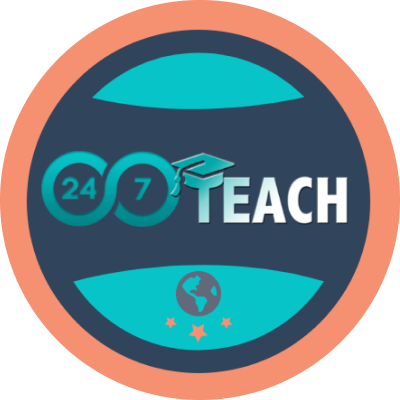Lesson 7: Unveiling the Mysteries of Problem-solving with Algorithms
Prefer to listen to this lesson? Click below.
Unveiling the Mysteries of Problem-solving with Algorithms
Introduction
Welcome to Week 4, Lesson 2 of our comprehensive Full Stack Engineering Bootcamp! Today, we will embark on a fascinating journey to understand algorithms and their critical role in problem-solving. By the end of this lesson, you will understand the intricacies of algorithms and be well-equipped to apply them in real-world scenarios. Let's get started!
What is an Algorithm?
At its core, an algorithm is a step-by-step procedure or formula designed to solve a problem. It's a recipe for problem-solving, where each step must be finite and clear. Algorithms are the heart and soul of any software, and learning how to design an efficient algorithm is crucial for any aspiring software engineer.
Importance of Algorithms
Efficiency: Algorithms with optimal time and space complexities ensure CPU time and memory are used effectively.
Scalability: A well-designed algorithm can handle larger datasets efficiently.
Maintainability: Algorithms are easier to debug, test, and maintain, ensuring the long-term viability of the software.
Algorithmic Time Complexity
Understanding time complexity is fundamental in analyzing algorithms. Time complexity describes the time an algorithm takes to complete as a function of the input length. The most commonly used notations for time complexity are:
O(1) – Constant time
O(log n) – Logarithmic time
O(n) – Linear time
O(n^2) – Quadratic time
Algorithmic Space Complexity
Space complexity measures the amount of memory an algorithm uses relative to the input size. Just like time complexity, space complexity is crucial in determining the efficiency of an algorithm.
Basic Types of Algorithms
Sorting Algorithms: Quick Sort, Merge Sort, Bubble Sort
Searching Algorithms: Binary Search, Linear Search
Graph Algorithms: Dijkstra's algorithm, Bellman-Ford
Dynamic Programming: Fibonacci series, 0/1 knapsack problem
Problem-solving Strategies in Algorithms
Divide and Conquer: Break down a problem into smaller sub-problems, solve each sub-problem, and combine the solutions.
Greedy Algorithms: Make the locally optimal choice at each step to find the global optimum.
Backtracking: Build a solution piece by piece and undo the last step if it doesn't lead to a viable solution.
Hands-on: Algorithm Design & Pseudo-code
Now, let's design a basic algorithm to solve a common problem—finding the most significant element in an array. We'll start by writing the pseudo-code:
pseudoCopy codeAlgorithm FindLargest(arr) Set max = arr[0] For i = 1 to length(arr) - 1 If arr[i] > max Set max = arr[i] Return max
Real-world Applications of Algorithms
Search Engines: Google's algorithm sorts through billions of web pages to generate relevant results.
Route Optimization: Uber and other ride-sharing services use algorithms to find the most efficient route.
Machine Learning: Algorithms form the foundation of ML models for predictive analysis, natural language processing, and more.
The Importance of Algorithm Analysis
Algorithm analysis isn't merely an academic exercise but a practical necessity. It helps engineers make informed choices among different algorithms and implementations. Suppose you're building a real-time analytics dashboard for a business like 24/7 Teach, with millions of data points that must be sorted and analyzed in real time. You'd want an algorithm that can handle large datasets quickly and efficiently, wouldn't you? That's where algorithm analysis comes in, helping you understand how your algorithm will perform as the dataset grows.
Big-O Notation in Depth
We discussed Big-O notation briefly, but let's delve a little deeper. Big-O provides an upper bound on the time an algorithm takes, helping engineers anticipate worst-case scenarios. For instance, a sorting algorithm with a time complexity of O(n^2) is exemplary for small datasets but might become impractical as the dataset grows. In the context of a large-scale e-learning platform like 24/7 Teach, where sorting user data efficiently can be crucial, understanding Big-O notation can mean the difference between a responsive user experience and a sluggish one.
Practical Exercise: Optimize an Algorithm
For this exercise, you are going to pick a sorting algorithm (e.g., Bubble Sort) and implement it. After that, analyze its time complexity and optimize it. Finally, write down how you improved its performance, whether you used a different data structure or you optimized the existing one. This will give you hands-on experience with both algorithm development and optimization.
Case Study: Algorithmic Approaches in Real-world Scenarios
Take our case study business, 24/7 Teach, as an example. Their platform may use algorithms for:
Personalized Recommendations: Using machine learning algorithms to offer customized courses to learners.
Content Optimization: Utilizing search algorithms to retrieve the most relevant content for educators.
Resource Allocation: Efficiently assigning server resources to different tasks using scheduling algorithms.
Understanding the algorithms behind these features can give you insights into building efficient, effective, and user-friendly applications.
Expanded Real-world Project Assignment
For this week's project, consider you are a backend developer at 24/7 Teach. Your task is to design an algorithm that can efficiently match students with the courses they are most likely to succeed in. Use the following considerations:
Personalized factors like past course performance, preferred subjects, and learning speed.
Availability of courses at the time the student usually logs in.
The level of the course relative to the student’s known skills.
You can present your algorithm as pseudo-code or implement it in a language of your choice. Remember to analyze its time and space complexity.
Final Thoughts
The world of algorithms is vast, rich, and indispensable in today’s technology landscape. This week, you've equipped yourself with critical algorithmic thinking and problem-solving skills that will serve you well as you venture deeper into the realm of full-stack development. Next week, we're taking a trip into the captivating world of data structures. Stay tuned!
In the next lesson, we'll delve deeper into data structures like arrays, linked lists, and trees. Until then, happy coding!
It's time to test our understanding and engage in insightful discussions.
Lesson Questions: Please answer each question in your own words.
Project: Course Recommendation Algorithm for 24/7 Teach
Objective:
The objective of this project is to design and implement a course recommendation algorithm for 24/7 Teach, an e-learning platform. You'll use algorithmic principles to create an efficient and effective system that matches students with the most relevant courses based on various factors such as past course performance, preferred subjects, and availability.
Requirements:
Understanding User Data: You have access to a database linked below that includes information about students' past course performances, the subjects they have shown interest in, and their general activity patterns on the platform.
Course Data: You also have information about available courses, their difficulty levels, and the times at which they are most often accessed.
Efficiency: Your algorithm should be designed with time and space complexity in mind, as it may be used on a large scale.
User Experience: The recommendations should enhance the user experience by providing personalized, relevant course suggestions.
Scalability: Assume that 24/7 Teach will grow both in the number of courses offered and the number of active users. Your algorithm should be scalable.
Steps:
Data Collection
Simulate or create mock data representing student performance, subjects of interest, and usage patterns.
Data Analysis
Use algorithmic thinking to understand what data is important for making good course recommendations.
Algorithm Design
Sketch the algorithm using pseudo-code, keeping track of each step and thinking about the logic behind each decision.
Time Complexity Analysis
Perform a theoretical time complexity analysis of your algorithm. Is it scalable?
Implementation
Write code to implement your algorithm. This can be done in any programming language of your choice.
Testing
Test your algorithm with different sets of data to ensure it's providing accurate recommendations.
Optimization
Based on your tests, think about what can be optimized. Make the necessary adjustments to your algorithm.
Documentation
Write a report explaining your algorithm, the decisions you made, the time complexity of your final implementation, and how it can be further optimized or adjusted.
Presentation
Prepare a short presentation showcasing your algorithm, its features, and why it is a good fit for 24/7 Teach.
Evaluation Criteria:
Correctness: Does the algorithm correctly match students with suitable courses?
Efficiency: What is the time and space complexity of your algorithm, and is this practical for a large-scale application like 24/7 Teach?
User Experience: Does the algorithm improve the user experience by providing personalized, relevant recommendations?
Scalability: How well can your algorithm adapt to a growing number of users and courses?
Documentation and Code Quality: Is the code well-documented and easy to understand?
Presentation: How well did you explain your project, the problems you solved, and the decisions you made?
Once you complete this project, you'll not only have a deeper understanding of algorithms but also have hands-on experience applying algorithmic principles in a real-world scenario. Good luck!
Reflection:
After completing the project, take a moment to reflect on what you've learned. What did you find challenging? What topics intrigue you the most? The world of web development is vast, and this is just the beginning!
Participate in the Group Discussion:
Please answer the discussion question in the comment section below.
What real-world scenarios can benefit from greedy algorithms, and what are the limitations?






